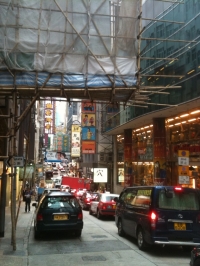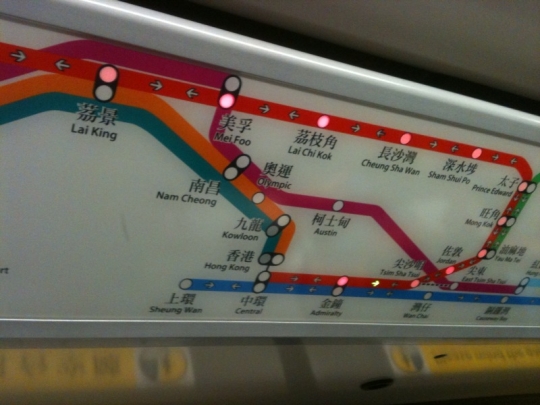Back in the office after 4 days in Hong Kong and Shanghai where I reconnected with many of the local developments with an eye towards its impact on our work at Sitra. By now everyone is quite familiar with the Chinese scale of development but what really caught my eye was how they're doing it, and the numbers behind it. In Shanghai I discussed the sustainability challenge with Prof. Wu, Vice President of Tongji University, comparing the US and the Chinese context and model.
Here's an interesting fact that Prof. Wu was quick to point out: China has 1/6th the developable land the US has, but 4 times the population. This is a factor of 24, meaning that China has to be 24 times more efficient just to meet the US (which is far from the golden standard in sustainability!). So the question in China is not about copying, but rather of redesigning the model, something that is at the heart of what we do.
The other discussion thread that sparked my interest was the fact that the Chinese were quick to distinguish that their politicians are “selected rather than elected”. This is an interesting distinction, making the public sector more akin to business than the European model.
The CEO—so to speak—is selected by the Board of Directors rather than elected by its employees. And in this sense the public sector is more businesslike in its willingness to experiment and R&D solutions. Clearly there are both upsides and downsides to the two political models, but what makes the Chinese context interesting is the coupling of a grand redesign challenge with a system that is more attuned to risk-taking.
In Finland we have a public sector which is highly developed, but our challenge today lies in our ability to move into uncharted territory, rather than improve the existing. How else will our aging society be able to meet growing service needs with a diminishing tax base? How will we meet our sustainability challenge within an energy and resource dependent economy? These are not efficiency challenges, but rather redesign challenges.
And like China, we will have to clarify our attitude towards risk. Doing new things has an associated risk, but doing nothing is arguably much riskier. So what is Finland’s new relationship to risk?

On the busy streets of Hong Kong
In Shanghai I met up with local practitioners too, to complement the “top down” discussion with a grassroots picture from the ground. One of the highlights was to reconnect with Bill Yen, who is doing great at his RMT practice. The practice field is charged with a passion to do, achieve, and redefine… something which is quickly becoming a rarity in our corner of the world.
While elusive at times, “passion” is something at the core of the European innovation challenge. In this sense while I have my own issues with the recent elections in Finland, it has helped inject a moderate measure of passion into our society. Let’s see if we can maintain an upwardly trend on this.
In Hong Kong, I visited the offices of OMA and was generously hosted by David and Betty. We discussed the changing nature of their practice and a continuing shift from designing buildings to redesigning opportunities. Of particular interest is their recent work with the local metro authority, which involves rethinking the idea of efficiency (how could you otherwise improve one of the world’s most efficient subway systems? A task they were asked to do).
My last anecdotes come for the Design in Education conference that I attended while in Hong Kong. Thank you Lorraine Justice and Ken Friedman for leading on this critical issue! While stimulating overall, my take-away from the event was that there is a very, very broad spread on the definition of design and design research within the academe. It made me wonder if one can even draw a boundary on the design community.
But perhaps the leading question conveniently boiled down to yet another number: it costs society on average $500,000 to educate a PhD in Design. How do we define the return-on-investment discussion on that investment?



